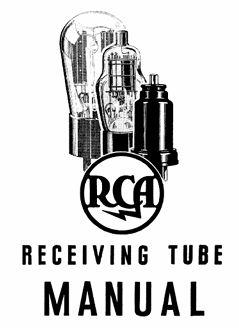9 hours ago
I think that RCA and GE introduced metal tubes in the USA in 1936. I don't know if they were being made by RCA, GE or both. GE and Westinghouse (and Wireless Specialty) built RCA sets and tubes until 1930 when RCA bought Victor talking Machine As a result of a Federal antitrust suit, GE and Westinghouse divested themselves of RCA, GE transferred their Harrison tube factory to RCA, and RCA built all GE and Westinghouse sets as well as their own until about late 1935.
RCA and GE pushed metal tubes in a big way. My 1936 GE G-63 (designed and built by GE) had a sticker advertising metal tubes, although only the 6A8 and 6K7 tubes were metal. The 6Q7 was glass and shielded.
All tubes in my 1936 RCA 5T7 are metal, including a 5W4 rectifier and 6F6 output tube.
Attached below is a copy of the 1937 RCA receiving Tube Manual, version RC13.

It is interesting to note that the 6L6 is illustrated in this manual as a metal tube. ST style 6L6 tubes were seen at the same timeframe and both metal and ST profiles are shown in the RCA Receiving Tube Manual, Version RC14 (1940). The 6L6 GC was introduced later in the early 1960s. BTW, never substitute a 6L6 or 6L6G for a 6L6 GC, as the 6L6 GC can withstand higher plate and screen voltages than the earlier models.
+1 on other comments. I wouldn't leave a 5U4 in place of a 5Z4 for a long period of time but for a half hour, I wouldn't worry.
RE 5Y4s, I don't know who came up with that tube, but the pinouts are very different than other rectifiers such as the 5U4, 5V4, 5W4, 5Y3, and 5Z4. The pinouts of the 5X4 and 5Y4 make them incompatible with the other rectifiers without rewiring the socket.
RCA and GE pushed metal tubes in a big way. My 1936 GE G-63 (designed and built by GE) had a sticker advertising metal tubes, although only the 6A8 and 6K7 tubes were metal. The 6Q7 was glass and shielded.
All tubes in my 1936 RCA 5T7 are metal, including a 5W4 rectifier and 6F6 output tube.
Attached below is a copy of the 1937 RCA receiving Tube Manual, version RC13.
It is interesting to note that the 6L6 is illustrated in this manual as a metal tube. ST style 6L6 tubes were seen at the same timeframe and both metal and ST profiles are shown in the RCA Receiving Tube Manual, Version RC14 (1940). The 6L6 GC was introduced later in the early 1960s. BTW, never substitute a 6L6 or 6L6G for a 6L6 GC, as the 6L6 GC can withstand higher plate and screen voltages than the earlier models.
+1 on other comments. I wouldn't leave a 5U4 in place of a 5Z4 for a long period of time but for a half hour, I wouldn't worry.
RE 5Y4s, I don't know who came up with that tube, but the pinouts are very different than other rectifiers such as the 5U4, 5V4, 5W4, 5Y3, and 5Z4. The pinouts of the 5X4 and 5Y4 make them incompatible with the other rectifiers without rewiring the socket.
"Do Justly, love Mercy and walk humbly with your God"- Micah 6:8
"Let us begin to do good"- St. Francis
Best Regards,
MrFixr55



![[-] [-]](https://philcoradio.com/phorum/images/bootbb/collapse.png)


